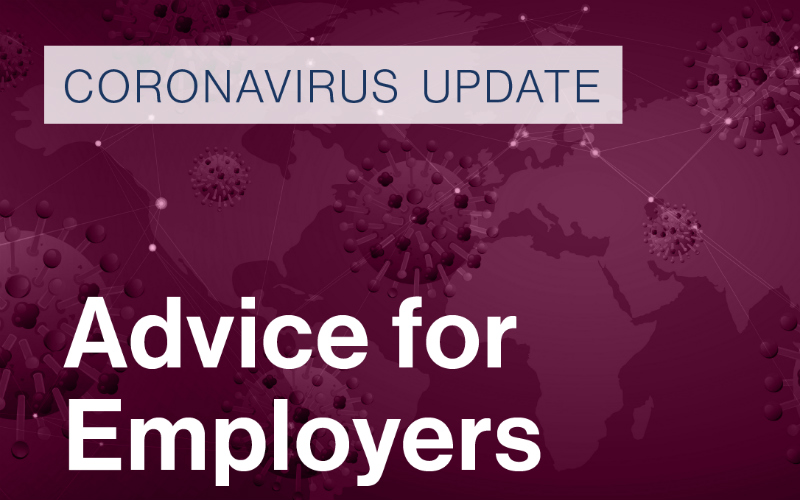
The Coronavirus Job Retention Scheme went live on 20 April 2020. Since its announcement in March, the numerous iterations of the government-issued guidance have given us an indication of what HMRC expect employers to demonstrate to be able to claim reimbursement. One area of complexity which the guidance vaguely addresses is the possibility of furloughing employees who are entitled to other forms of statutory leave. Below we look at how furlough interacts with both sick leave and paid parental leave (i.e. maternity, paternity, shared parental and adoption leave).
Sick Leave
While it is covered in the CJRS guidance for employers, the relationship between furlough and sick leave remains ambiguous.
The first point to note is that furlough and sick leave must be kept distinct from one another. An employee can either be on sick leave, receiving Statutory Sick Pay (“SSP”), or placed on furlough, but not both. Employers would need to consider which option is appropriate to their employees’ circumstances. For payroll purposes, the distinction must be clear: employees who are or were receiving SSP must stop receiving SSP to be placed on furlough at their agreed furloughed rate, and vice-versa.
Generally speaking, employees who are unfit for work due to sickness or self-isolation will be eligible for SSP. For short-term illnesses, there is some ambiguity in the guidance over which option is appropriate. On the one hand, it specifically states that the CJRS is not intended to support short-term absences due to sickness. Conversely, it goes on to say that employers can furlough employees for business reasons if they are currently off sick. While this does suggest some scope for employers to furlough employees who are temporarily sick, the requirement to have a separate business reason suggests that short-term illness alone is not an appropriate reason to furlough someone. Our view is that, if an employee is continuing to work during lockdown and has a short-term illness, SSP would be the more appropriate option and furlough should only be considered if there is a separate business reason to justify it.
Where an employee has already been placed on furlough and subsequently has a short-term illness, the guidance recommends a different approach. The latest iteration suggests that choosing whether to keep an employee on furlough or move them to sick leave is a decision for the employer. In other words, it is up to the employer to decide whether staff who become ill during furlough should be kept on furlough (at their furloughed rate of 80% normal salary) or taken off furlough and moved to SSP (at SSP or company sick pay rates). Generally, a short term period of sickness should not be allowed to influence a decision on whether to furlough. It is also worth remembering that a period of furlough needs to be a minimum period of three weeks if wages can be reimbursed so in these circumstances, it is better to accept that the employee will need a few days off due to sickness and treat it as such.
For long-term sickness absence, the position again depends on the decision of the employer. The guidance specifically allows staff on long-term sick leave to be furloughed if the employer so decides. Again, employees in this position would need to be taken off SSP and moved to furlough leave. We would highlight that long-term sickness absence should be distinguished from employers who are advised to shield for health reasons. There is specific provision in the CJRS guidance for shielding employees to be furloughed if they cannot work from home, and unless the employee is signed off as unfit for work, they may not be entitlement to SSP as an alternative.
When choosing which option is appropriate, employers should consider the following:
- There are different cost implications of SSP v furlough. While furlough leave allows employers to reclaim 80% wage costs up to £2500, employers must meet the cost of SSP themselves. However, sick employees are entitled to receive SSP as a minimum meaning 80% furlough rates might require topped up if they result in the employee being paid less than their entitlement to SSP.
- Any period of furlough must last for a minimum of 21 days in order to qualify for reimbursement under the CJRS. Employers taking employees off furlough before they have completed 3 weeks of furlough risk forfeiting their claim to reimbursement.
- For employees on long-term sickness absence, employers should consider their ongoing entitlement to SSP. Subject to a different contractual entitlement, employees on long-term sick leave exhaust their entitlement to SSP after 28 weeks of absence.
Family-Related Statutory Leave
The relationship between furlough and family-related statutory leave, like sick leave, is briefly addressed in the CJRS guidance for employers.
Irrespective of the CJRS, employees who are eligible for Statutory Maternity, Paternity, Adoption, Shared Parental or Parental Bereavement Pay remain entitled to it under the normal rules of employment law.
It is unlikely that such statutory payments can be reimbursed through the CJRS. The guidance does not specify this directly, but states that employers can claim for “enhanced (earnings related) contractual pay” for qualifying employees. This suggests that, while enhanced parental pay is recoverable, the cost of statutory family-related pay must be borne by the employer as normal.
For that reason, employers may want to consider whether furlough is an appropriate option for employees who are on, finishing or about to start a period of family-related leave mentioned above. Unlike the provisions for sick pay, there is less scope for employers to decide if and when such employees should be placed on furlough. It will depend on the individual’s circumstances.
If an employee is already on family-related leave, there is nothing in the guidance which suggests that they cannot be placed on furlough upon their agreed return to work. Absent any guidance to the contrary, an employee coming off family leave could therefore be placed immediately on furlough once their leave ends.
If an employee is already on family related leave, they may ask to return to work earlier than agreed, at which point they could be placed on furlough if they otherwise meet the requirements. For example, for maternity leave purposes, employees must give their employers at least 8 weeks’ notice if they wish to end their maternity leave before the agreed end date (per Regulation 11(1) of the Maternity and Parental Leave Regulations 1999). However, two points of warning must be noted to any employee considering ending their family-related leave early:
- Employees cannot take furlough leave instead of the statutory minimum period of maternity leave. Those taking maternity leave must take at least 2 weeks statutory mat leave or, for factory and workshop employees, 4 weeks after childbirth; and
- Employees who agree to end their family-related leave and go on furlough cannot return to family-related leave once their period of furlough is over. For example, a new parent taking 9 months’ maternity leave who opts to go on furlough after only 2 months, cannot complete the remaining 7 months’ maternity leave once furlough is over. Choosing to be placed on furlough brings the family-related leave to an end and the employee will be expected to return to work once their period of furlough is over, which may be considerably earlier than they would have returned had they stayed on family-related leave.
For employees who are due to go on family-related leave in the coming weeks, they can be furloughed as with other employees until their leave starts. The earliest start date for maternity leave is usually 11 weeks before the expected week of childbirth. For employees undertaking family-related leave after 25 April 2020, separate guidance applies to the calculation of their statutory pay if they were on furlough in the relevant 8 weeks’ before their family-related leave begins. In such cases, employers should calculate average weekly earnings based on the higher of:
- What the employee actually received from their employer; or
- What the employee would have received from their employer had they not been on furlough
In many cases, the statutory entitlement to family-related pay will end up being more than the 80% being reimbursed by the Job Retention Scheme, unless the employer is choosing to top up to 100% during furlough. For example, for Statutory Maternity Leave purposes, employees will be eligible for 90% of average weekly earnings for the first 6 weeks, followed by 33 weeks of 90% average weekly pay or the statutory flat rate of £151.20 (since 6 April 2020). As with sick pay, it is important that employers make a clear distinction between furloughed pay and family-related statutory pay for payroll purposes.
Insight from Noele McClelland, Employment Law Partner. For more information contact Noele or any member of the Employment team on 03330 430350.
